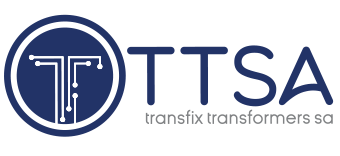Stakeholders in the biofuels and biogas industry can advocate for better legislation and connect with other stakeholders by being active members of associations such as the Southern African Biogas Industry Association (SABIA). The association also makes it possible for stakeholders and interested parties to gain access to industry knowledge and news.
Posts
Power and propulsion engineering company Rolls-Royce has announced its plans to achieve net zero carbon emissions by 2050, at the latest.
The company’s actions and the development of new low-carbon technologies will enable the users of such products to, in turn, lower their carbon emissions, enabling an accelerated take-up of sustainable fuels and driving step-change improvements in efficiency, the company states.
Africa and UK-focused energy company Kibo Energy’s primary focus going forward will be on renewable energy opportunities, part of which will see Kibo jointly develop a portfolio of waste-to-energy projects in South Africa. Kibo, therefore, intends to appoint specialist advisers to assist it in developing and implementing an appropriate disposal strategy to dispose of its coal assets or possibly repositioning these assets to make use of alternative fuel sources other than coal, given rapid advances in developing alternative fuel sources in this domain.
GreenCape’s 2021 market intelligence reports (MIRs), produced in partnership with the Western Cape Government’s Department of Economic Development and Tourism, are now available for download. The reports highlight the investment opportunities in key sectors of the green economy in the province, which has been “working hard to ensure the province is an attractive destination for investors looking to start or expand their businesses,” says Western Cape Finance and Economic Opportunities Minister David Maynier.
The South African Photovoltaic Industry Association (SAPVIA) has added its voice to the growing number of supportive voices following President Cyril Ramaphosa’s announcement that the licensing threshold for embedded generation plants will increase to 100 MW. In welcoming the news, SAPVIA believes this increase will be viewed as a watershed moment for industry in South Africa, especially as the country works to recover from the Covid-19 pandemic.
The debacle surrounding South Africa’s bid to secure emergency power supplies has highlighted a dysfunctional energy policy that’s subjecting Africa’s most-industrialized nation to intermittent blackouts. Since March, the energy department has identified companies it wants to provide almost 2 000 MW of electricity to the grid by August next year. But a losing bidder has alleged that the selection process was corrupt and sought to reverse it in court, environmental activists have raised objections and lawyers are at odds over whether ship-based power plants can be moored in the nation’s ports.
A cloud of methane was detected by satellite near coal mines in South Africa, drawing attention to a lesser-known environmental risk that comes from using the dirtiest fossil fuel. The potent greenhouse gas — methane traps roughly 84 times more heat than carbon dioxide in its first two decades in the atmosphere — was emitted at an estimated rate of 65 metric tons an hour on May 10, according to Kayrros SAS. The Paris-based analytics company found the leak by parsing European Space Agency satellite observations. It was the worst plume of methane Kayrros detected in the data over Africa this year.
The South African Wind Energy Association (SAWEA) will host the fourth international academic wind energy conference – WindAc Africa 2021 – at the South African Renewable Energy Technology Centre’s conference centre, in Cape Town, from October 5 to 7. This academic exchange platform offers a special programme for high-potential young people from South African universities and the organisers are hoping to welcome 45 sponsored students at this year’s event.
Private healthcare and hospital company Mediclinic on June 15 announced that it had signed a 12-year power purchase agreement (PPA) with sustainable infrastructure investment fund manager Moshesh Partners, to reduce the hospital group’s energy costs. Mediclinic, based in South Africa and Namibia, contracted Moshesh Partners to install solar photovoltaic (PV) systems at six of its hospitals. This will ensure the hospitals have access to affordable and clean power.
A new international stock-take of the global transition to renewable energy highlights an “alarming gap between targets and actions” with the share of fossil fuels in energy consumption failing to decrease for the tenth consecutive year in 2020, despite a 4% Covid-linked fall in demand. Published by REN21, the ‘Renewables 2021 Global Status Report’ shows that modern renewable energy (excluding the traditional use of biomass) accounted for an estimated 11.2% of total final energy consumption (TFEC), up from 8.7% a decade earlier.
INDUSTRY NEWS
- NERSA appoints Electricity Market Advisory Forum to guide power-market reformDecember 19, 2025 - 2:04 pm
- Eskom offers more details on envisaged roles of the NTCSA and the TSODecember 18, 2025 - 11:04 am
- NTCSA says any electricity deal to salvage Mozal must ensure its financial sustainabilityDecember 17, 2025 - 3:01 pm
WHERE TO FIND US
Address
9 Yellow Street
Botshabelo Industrial Area
Botshabelo, Free State
Call / Email Us
Tel: +27 (0) 61 956 6772
Email: info@transfix.co.za
